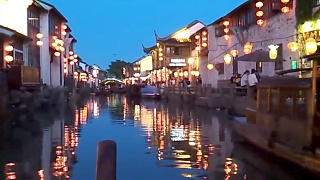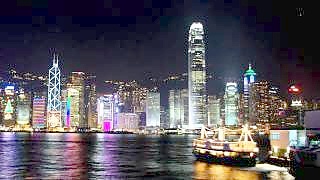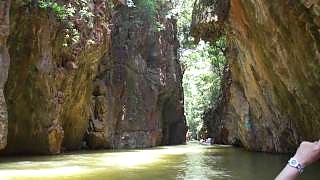
|
With Beijing Old Liu ...
Xinjiang Visitor Guide: Natural Landscapes & Practical Travel Tips
Xinjiang is one of China's most captivating and culturally diverse regions, offering travelers a mix of stunning landscapes, rich history, and a variety of ethnic cultures. From the vast deserts of the Taklamakan to the snow-capped Tianshan Mountains, Xinjiang has something for every type of traveler, whether you're an adventurer, a culture seeker, or a nature lover. This guide provides an in-depth look at Xinjiang's natural wonders and offers practical travel tips to ensure a smooth and unforgettable visit.
The Tianshan Mountains (Heavenly Mountains)
Overview: The Tianshan Mountains are a UNESCO World Heritage site with dramatic alpine landscapes, including towering peaks, lush valleys, and pristine glacial lakes. The region is excellent for hiking, sightseeing, and experiencing the local nomadic culture.
Key Highlights:
Bogda Peak: A breathtaking snow-capped peak rising over 5,445 meters, ideal for experienced mountaineers.
Tianchi (Heavenly Lake): A stunning alpine lake, perfect for day trips and boat tours, located about 110 km from Urumqi. It’s surrounded by spruce trees and offers picturesque hiking trails.
Travel Tip: It is best to visit Heavenly Lake during late spring or summer (May-August) when the weather is most favorable, and the trails are accessible. Always bring layers as temperatures can drop significantly in the mountains.
Taklamakan Desert
Overview: The Taklamakan Desert, one of the largest shifting-sand deserts in the world, is known for its extreme beauty and harshness. Visiting this desert is an adventure in itself, where you can explore the golden dunes and see rare desert plants and animals.
Key Highlights:
Kumtag Desert: A dramatic expanse of sand dunes in the eastern part of the Taklamakan, easily accessible from Turpan.
Yarkand Poplar Forest: A rare sight of poplar trees thriving in the desert. Visit in autumn for a golden spectacle as the leaves change color.
Travel Tip: Be prepared for extreme conditions in the desert. Pack plenty of water, sunscreen, and lightweight, breathable clothing. It’s best to go with a guided tour or a local expert as navigating the desert on your own can be dangerous.
Kanas Lake
Overview: Located in the Altai Mountains, Kanas Lake is renowned for its crystal-clear waters, dense pine forests, and breathtaking autumn landscapes. It's a popular destination for hikers and photographers looking to capture the stunning seasonal colors and wildlife.
Key Highlights:
Kanas Nature Reserve: A pristine natural park home to wildlife such as snow leopards and elk. The area is perfect for outdoor enthusiasts.
Kanas Monster Legend: Local myths speak of a mysterious creature lurking in the lake, adding a bit of intrigue to your visit.
Travel Tip: The best time to visit Kanas is from June to September. In autumn (September), the scenery turns golden and is incredibly photogenic. Access is more difficult in winter due to heavy snowfall, but the area is still open for adventurous travelers.
Ili River Valley
Overview: The Ili River Valley is a picturesque region characterized by vast green pastures, rolling hills, and wildflower meadows. The valley contrasts beautifully with Xinjiang's deserts and rugged mountains, making it a favorite spot for nature lovers and photographers.
Key Highlights:
Nalati Grassland: A scenic area with endless pastures and colorful wildflowers in summer. Ideal for horseback riding and experiencing the local Kazakh culture.
Lavender Fields: Famous lavender fields bloom in June, turning the valley into a sea of purple and offering a unique contrast to the green hills and blue skies.
Travel Tip: Visit the Ili River Valley in late spring (April-May) or early summer (June) to see the lavender fields and wildflowers at their peak. Horseback tours are highly recommended to explore the vast grasslands.
Karakul Lake and Pamir Mountains
Overview: Located along the famous Karakoram Highway, Karakul Lake is one of the most beautiful high-altitude lakes in the world. Set against the backdrop of the snow-covered Muztagh Ata and Kongur mountains, it offers stunning reflections and an opportunity to witness the nomadic life of Kyrgyz herders.
Key Highlights:
Muztagh Ata Mountain: Known as the “Father of Ice Mountains,” it’s popular with mountaineers. The lake reflects the snow-capped peak beautifully.
Nomadic Culture: Visitors can stay in traditional yurts and experience the simple lifestyle of Kyrgyz and Tajik herders.
Travel Tip: The altitude at Karakul Lake is over 3,600 meters, so be prepared for high-altitude conditions and take time to acclimate. The best time to visit is from May to October, as the winters are harsh.
Flaming Mountains and Turpan Basin
Overview: The Flaming Mountains, located in the Turpan Basin, are famous for their red, flame-like appearance under the hot desert sun. This region is not only rich in unique landscapes but also home to significant historical sites, including ancient cities and Buddhist caves.
Key Highlights:
Gaochang Ruins: An ancient city that was once a major hub on the Silk Road. The ruins are a fascinating blend of history and desert scenery.
Bezeklik Thousand Buddha Caves: A series of Buddhist cave paintings dating back to the 5th century. A must-visit for history enthusiasts.
Travel Tip: Turpan can get extremely hot in summer (up to 50°C), so plan to visit in the early morning or late afternoon. Bring plenty of water and sun protection.
Practical Travel Information for Xinjiang
When to Visit
The best time to visit Xinjiang depends on the specific regions you plan to explore. In general, late spring (April-May) and autumn (September-October) offer the most pleasant weather for travel. The summer can be hot, especially in desert areas, but it is also the best time for visiting the mountains and high-altitude lakes.
Transportation
By Air: Xinjiang has several international airports, including Urumqi Diwopu International Airport (the main gateway), Kashgar Airport, and Kanas Airport. Domestic flights connect Urumqi with most major Chinese cities.
By Train: The railway network connects Urumqi with other Chinese cities such as Beijing, Shanghai, and Xi’an. The journey is long but scenic, especially on the high-speed trains.
Local Travel: To explore Xinjiang’s remote areas, it is highly recommended to hire a local guide or driver. Public transportation can be limited in the more rural regions, and self-driving is an option for those familiar with local road conditions.
Accommodation
Xinjiang offers a wide range of accommodations, from luxury hotels in major cities like Urumqi and Kashgar to guesthouses and homestays in rural areas. Staying in a yurt with local nomads in regions like the Ili Valley or Karakul Lake is a unique experience.
Cultural Sensitivity
Xinjiang is home to a diverse mix of ethnic groups, including Uighur, Kazakh, Kyrgyz, and Tajik peoples. Respect for local customs, particularly around religion, is essential. Many locals are Muslim, so it is important to be mindful of dress codes, especially in rural areas and when visiting mosques. Always ask for permission before taking photos of people or inside religious sites.
Language
Mandarin Chinese is the official language, but many locals, especially Uighurs and Kazakhs, speak their own languages. English is not widely spoken outside major tourist areas, so it’s helpful to learn a few basic phrases in Mandarin or Uighur, or have a translation app handy.
Food and Cuisine
Xinjiang is famous for its lamb kebabs, hand-pulled noodles (laghman), pilaf (polo), and naan bread. Uighur food is flavorful, with a blend of Central Asian and Middle Eastern influences. Be sure to visit the local markets in Urumqi or Kashgar to sample the regional specialties.
Important Note: Always carry your passport and travel documents. Xinjiang has a heavy security presence, and travelers may encounter frequent security checks.
|





 “Pro-china” or “pro-democracy” – huh ?
“Pro-china” or “pro-democracy” – huh ?![`US-sponsored separatist groups, backed by Washington for decades, are being mobilized to attack and undermine activities related to the BeiJing 2022 Olympics, starting with the torch relay in Greece. I explain the background of the “Free Tibet” movement and how the US government, through the CIA, backed it as early as the 1950s and transferred its operations to the National Endowment for Democracy (NED) [or `Dominion` / enslavement]. ` With The New Atlas . . . Bonus films - terror activities by US-backed `opposition` in Myanmar . . . Bonus film 2 - subverting the `left` . . . Bonus film 3 - on Ecuador . . . Bonus film 4 - on Cambodia . . . They say : `How dare you put your face in front of my fist ! Serve your master. Or else. ` More . . . On the US plan to nuke Chinese cities - as revealed by Daniel Ellsberg, famous for the `Pentagon Papers`, with NuMuves . . . On the Falun Gong cult . . . *** Planning war on China - part 11 - don't miss it ***](https://img.youtube.com/vi/2w31eNNcGVU/mqdefault.jpg)




















